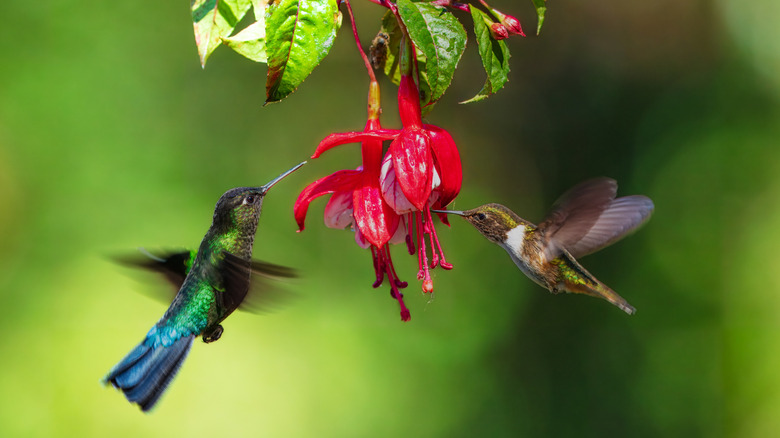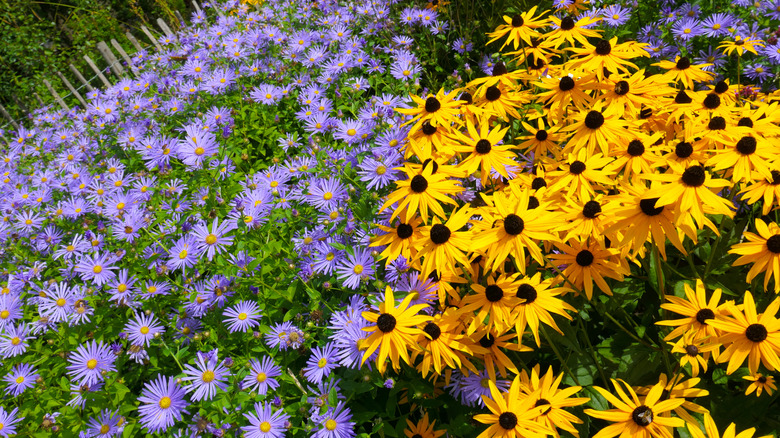Draw More Hummingbirds To The Garden With A Simple Strategy That Works
With their gleaming feathers and rapid wing beats, hummingbirds continue to dazzle people who are lucky to spot them. These creatures elicit awe, whether people are spotting the common Anna's Hummingbird along the West Coast of the U.S. or the Esmeraldas Woodstar — the rarest and smallest of these birds, found in Ecuador, home to the most hummingbird species in the world. To increase their chances of spotting the birds, people hang up sugar water feeders or plant flowers that will easily attract hummingbirds to their garden. However, a simple way to draw hummingbirds to your yard is to feed them bugs, as insects make up a substantial portion of these birds' diet.
Although nectar found in flowers and feeders provides the birds with a delicious treat, bugs offer more protein, which is essential for building their muscle and feathers. Their favorites include gnats, fruit flies, ants, aphids, mites, spiders, and mosquitos, all of which are tiny enough to be swallowed whole. Hummingbirds can eat anywhere from several hundred to a thousand insects daily. When a female hummingbird is caring for her young, her insect consumption might rise to as many as 2,000 insects a day.
Attract bugs for hummingbirds to eat
One low-maintenance option to boost the bug population in your yard is to entice them with rotting fruit. If you have a compost pile, place the fruit on top for insects to devour, or put the fruit out on a small plate. Instead of tossing overripe bananas, use them to attract hummingbirds. They'll lure fruit flies, turning the bananas into hummingbird magnets. If this doesn't sound appealing, another simple option is to leave fallen leaves for gnats to feast on. They love moist decaying plant material and, better yet, hummingbirds love the gnats.
A more aesthetically pleasing (and smelling) way to increase bugs in your yard is to plant perennial flowers that appeal to them. Ironweed (Vernonia noveboracensis), which grows in USDA Hardiness Zones 5 to 9, is a wildflower that can also grow well in gardens. Ironweed grows 5 to 8 feet tall, producing clusters of purple flowers on top of slender blue-green leaves.
Aromatic asters (Symphyotrichum oblongifolium) is another wildflower that will likely invite bugs. These flowers, suitable for zones 3 through 8, are plants in the Asteraceae (daisy) family, showcasing narrow purple petals around a bright yellow center. They have a mounding habit and grow to a height and a spread of 3 feet. Other cheerful options are black-eyed Susan (Rudbeckia hirta) and orange coneflower (Rudbeckia fulgida) — both of which also are part of the Asteraceae family. The black-eyed Susan is hardy from zones 3 through 8, while the orange coneflower is hardy from zones 3 through 9.

